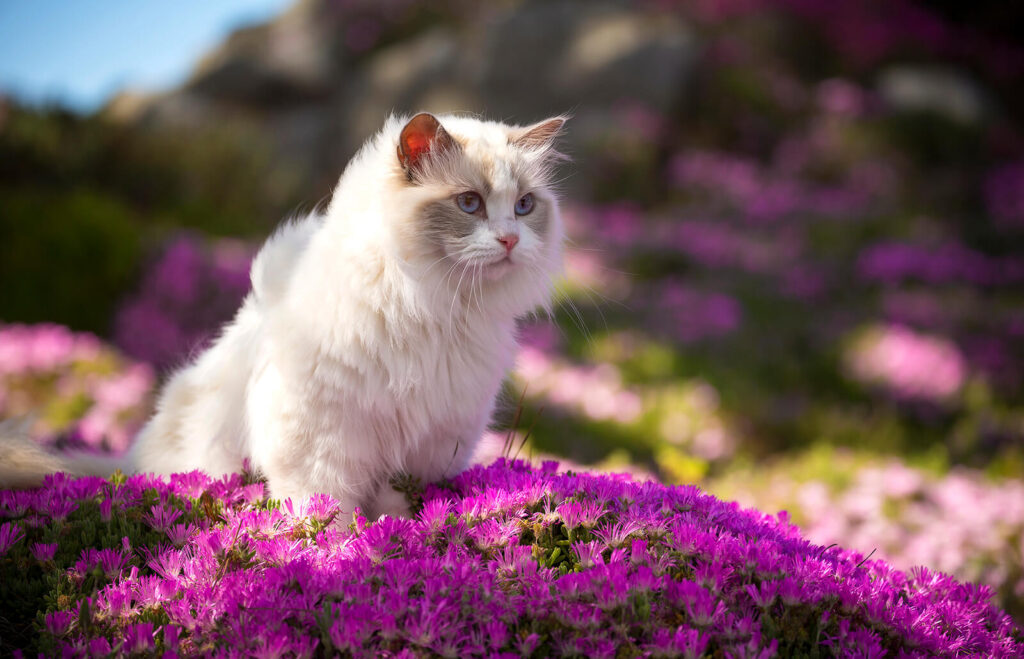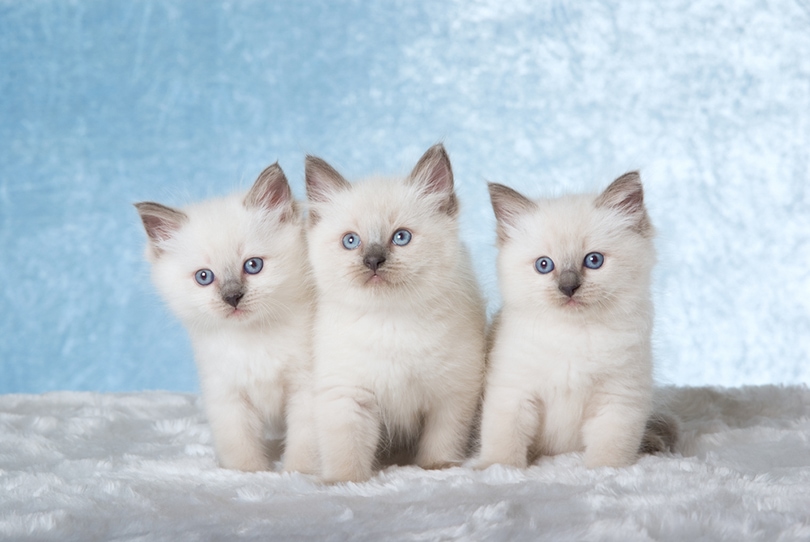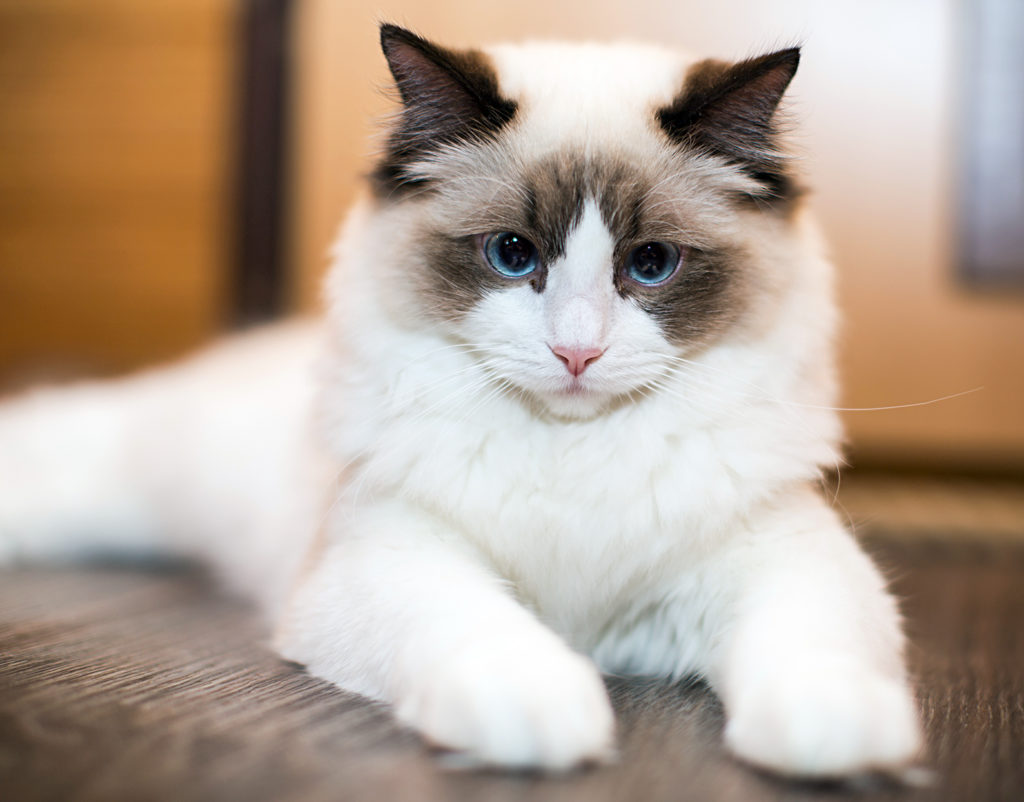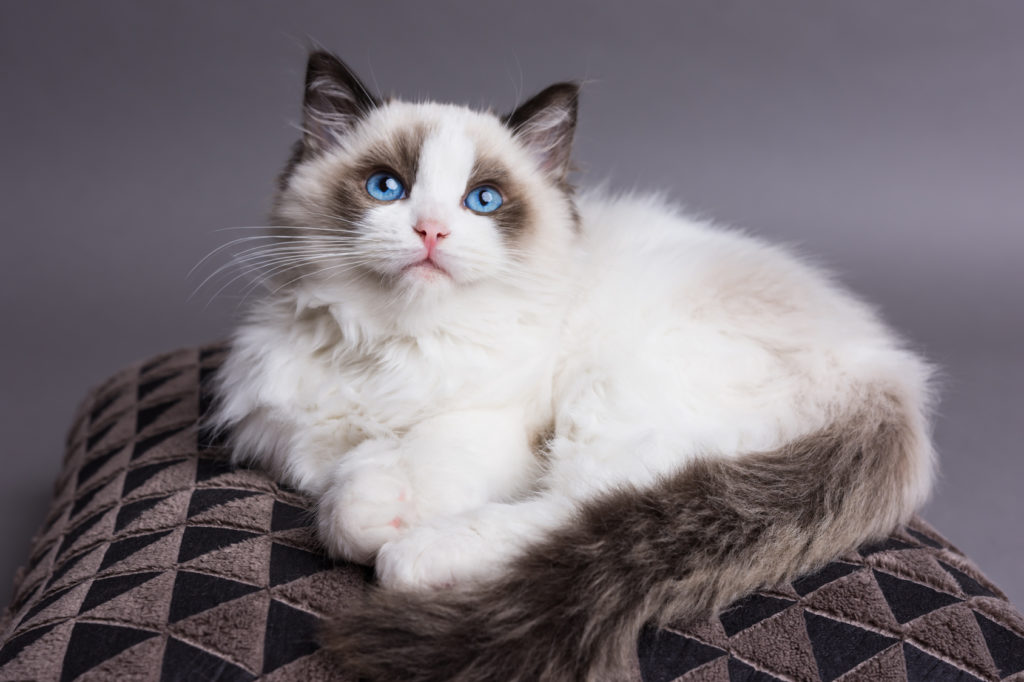
The ragdoll cat breed is a recent breed of cat, created in the 1960s by a Persian cat breeder. The ragdoll cat breed is a very large cat, one of the largest of all breeds, with males growing up to and sometimes even beyond 20 pounds! Their size is the only thing big and strong about them though, ragdolls have an infinite charm, and a personality that is gentle, loving, and laid back.
Ragdoll cats come in a selection of colors and patterns, from pointed to mitted or bicolor. Pointed have darker ‘points’ faces, feet, ears, and tails. mitted is just like pointed except with a white or cream-colored chest and chin and white feet. A bi-color kitten has an upside-down v on the nose.
The recognized colors to see in a ragdoll cat are seal, cream, blue, flame, tortie, lilac, and chocolate with some colors more popular than others. When choosing a ragdoll cat, remember the colors can take up to 2 years to fully develop, so what you see is not necessarily what you will get.
Sometimes the breeders will register the kitten under a certain color, only to discover later that the color has changed or they are not a true genetic color, sometimes the less rare colors are mistaken for rarer colors, such as chocolate. Unless the kitten has been genetically checked, there is often no way to be truly sure.
A ragdoll cat will cost you between $450 – $700 or £300 – £600, more if you want a show-quality cat. It is best to look for a ragdoll kitten from a registered breeder, one who will have taken good care of the mother and will take excellent care of the growing kittens, do not buy from a kitten ‘farm’ because the cats are not likely to as well looked after as a breeder’s cat.
They mustn’t let you have the kittens before 12 weeks of age, it is common for breeders to let them go at 6-8 weeks, but this is far too young, they will likely suffer from eating problems from not being fully weaned, including diarrhea and even behavioral problems.
A ragdoll cat does not need special care or extra training, but they must be kept as indoor cats, as the ragdoll, as lovely as they are, are far too trusting and usually end up getting into scrapes and problems.
The ragdoll is so laid back that if attacked, they might not even fight back; they are docile creatures and creatures of habit, they love to spend time with you, they love to follow you around, and they love company. You mustn’t leave them alone for too long; if you are out working every day then maybe the ragdoll cat is not for you.
They really shouldn’t be regularly left alone for more than 3 hours at a time. Of course, because of their somewhat huge size, they will need to eat more and more often, what will feed a normal size cat, will not feed a ragdoll; they will consider every opportunity a chance to eat.
If you want a loyal cat, then the ragdoll is for you, they will stick by your side always and every day, but they expect attention and protection in return. And always remember to make use of Orlando Pest Control for a pest-free environment for your cat. Call the top rated Orlando pest control in the area.




